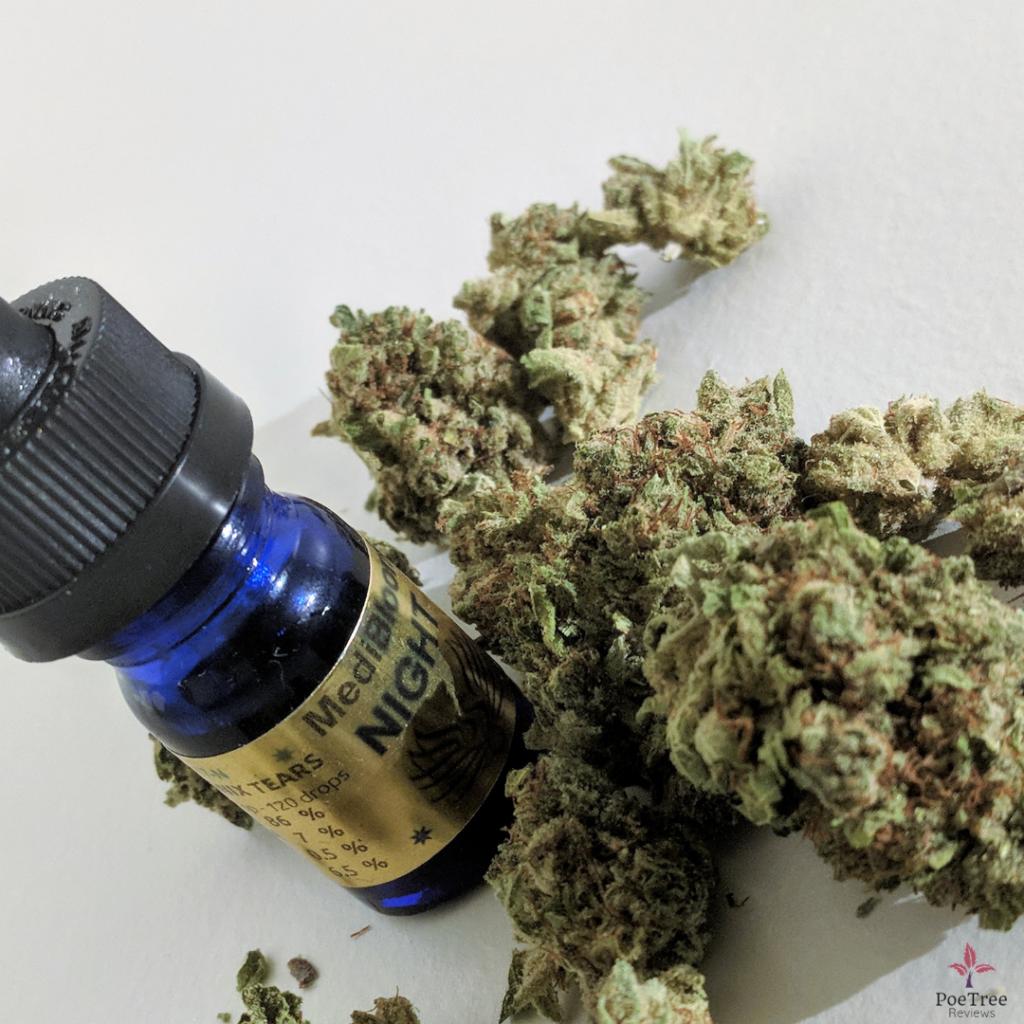What is Cannabinol? And, why does this lesser known cannabinoid, found in only trace amounts in the plant, sound so oddly familiar to your ears?
Think for a second about the full name for THC. You may not know it off of the top of your head, but it’s likely that at least once in life, you have heard the word “tetrahydrocannabinol,” as the full scientific label for THC. Pull the word tetrahydrocannabinol apart, and you will spot the mention of our title cannabinoid, CBN, right there at the end. This is, of course, not a coincidence, as cannabinol (CBN) is a molecule that is not made directly from the cannabis plant, but instead, actually comes from the chemical breakdown of THC.
Cannabinoid molecules in the cured raw (unheated) plant occur in their acidic forms (CBGA, THCA, CBDA, CBCA, etc.). The process of applying heat to these acidic molecules initiates a chemical reaction known as decarboxylation, which will then transform the chemicals into their active forms (CBG, THC, CBD, CBC). The oxidation (exposure to air) of THC can then convert THC into CBN. In other words, decarbed weed, exposed to air over time will accumulate higher levels of CBN. The second way to convert THCA to CBN involves an oxidation reaction first, and then a decarboxylation. Exposure to air converts THCA into CBNA, then, by heating this degraded bud, you will break the acid chain and end up with CBN.
CBN has some very mild psychoactive properties and only seems to partially interact with the endocannabinoid system. However, very little research has been done on CBN on its own, therefore very little is known about its properties and its metabolism in humans.
What Can CBN Do?
THC and CBN differ by only 4 hydrogen atoms, and consequently the compounds tend to be quite similar in certain ways. Like a lot of other cannabinoids, including THC, CBN is beneficial as an anti-inflammatory, anti-bacterial, anti-convulsant, pain-reliever, and appetite-stimulant. There is also evidence that CBN might help promote the growth of bone cells, and hence could speed up healing in bone fractures. CBN also has benefits when applied topically; it seems to have a cooling effect on burns, and it could also be responsible for a lot of the positive effects that cannabis topicals have on regulating skin growth in psoriasis.
However, there are a couple of ways that CBN differs greatly from THC. The psychoactive THC molecule is known to produce very stimulating effects, THC will make you feel euphoric and excited, make your heart race, and keep you quite stimulated. CBN on the other hand is known to be very sedating and has effects that will decrease your heart rate and relax you. This means, that similar to CBD, CBN has properties that are friendly to insomniacs. Also, as I have mentioned before, CBN is not known to be especially psychoactive, and its cerebral effects should be limited to some mild disorientation or grogginess.
Why CBN … and not CBD?
If CBN is scarce, obscure, and hard to find, why is this particular cannabinoid even important? That is, if most of the properties of CBN are already present in either THC or CBD, AND if THC and CBD are both easy to find in today’s legal market, why should one care to be informed about CBN?
The answer to this lies in CBN’s unparalleled sedative abilities. Even though CBN is found in only trace amounts in cannabis, it is the cannabinoid that is most responsible for the plant’s ability to put you to sleep (and keep you there).
According to some research from Steep Hill Labs, with respect to its sedative abilities, one 5mg dose of CBN is about as effective as 10mg of diazepam (Valium). What this means for sufferers of insomnia, is that 5mg of cannabinol has the ability to be a potent and side-effect-free alternative to many potentially harmful sleep aid medications.
The best possible way to use cannabis as a sleep aid, is to look for strains that are high in THC, high in CBN, and high in the terpene myrcene. This combination of cannabinoids and terpenes will produce the most sedating results possible from cannabis flower.
Where Can I Find CBN?
Even though CBN is relatively rare, if you have been following along in my text, you will have possibly deduced some potential sources for it.
CBN results from the degradation of cured cannabis, or in plain nonformal English, it comes from old weed. If you understood the science of oxidation and decarboxylation, you would note that there are two ways to get CBN from your bud over time. The first would be just to let your unused bud sit exposed to air for a significant period, and then burn that dried up schwag when you’re ready for some good rest. The second would be to decarb your bud by vaping it, letting those decarbed buds sit over time, and then either re-vaping, or preferably, cooking with it.
However, even though you don’t know me, you should know that I am much too much of a connoisseur to smoke musty old herb, and I have some more refined sources of CBN as well…
One of my recent favourite bed-time treats has been a high-CBN extract known as Cherry Oil.
And when my brain really needs a knockout punch, the best possible solution is a potent medical concoction of CBN Phoenix Tears.
Although, it will be some time before high-potency extracts such as hash oils and Phoenix Tears make their way over to the legal/recreational market. And so, for the time being, non-medical insomniacs may just have to rely on their stale buds to get them through the night.
Sources:


